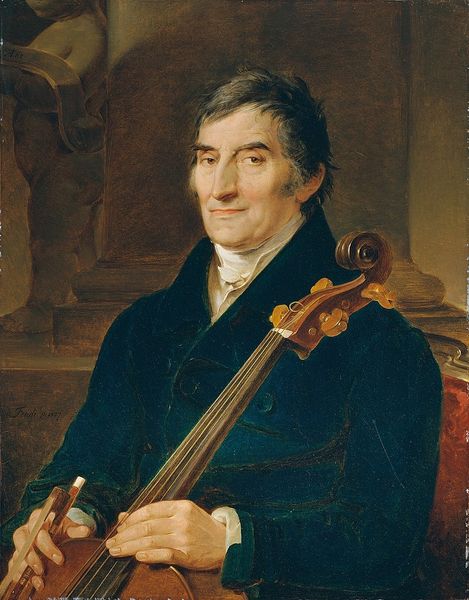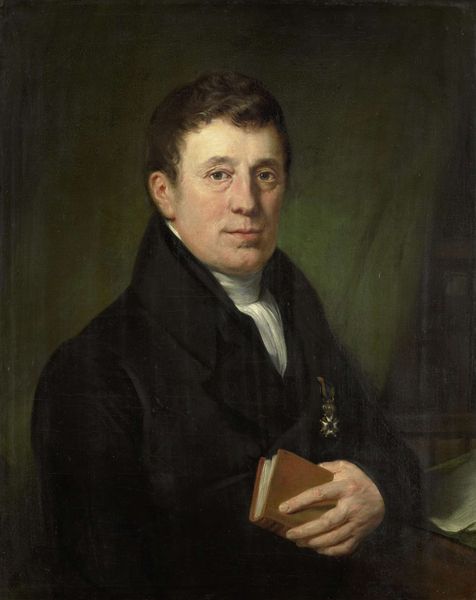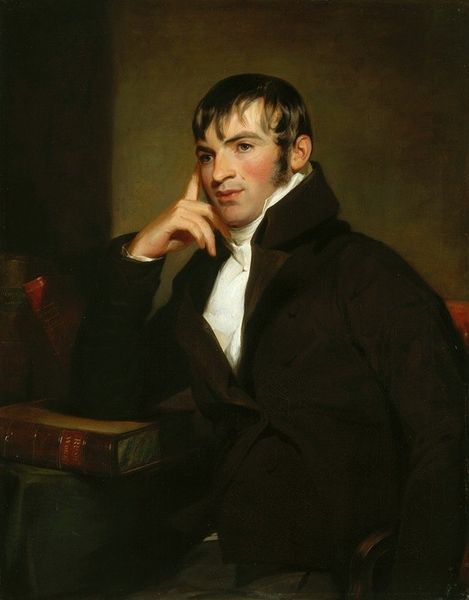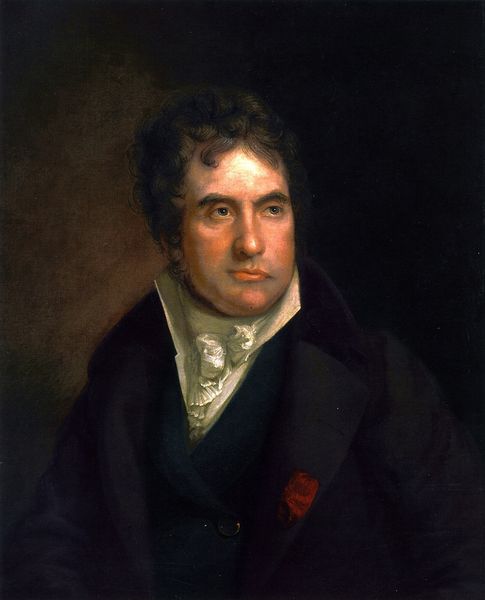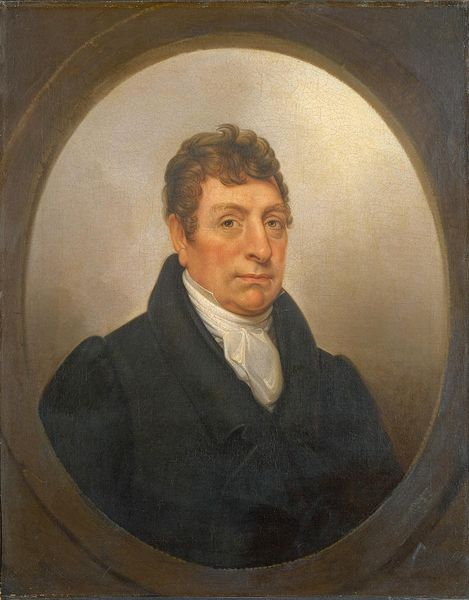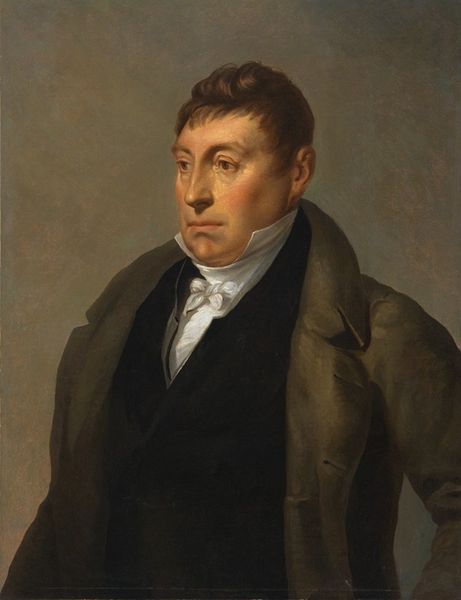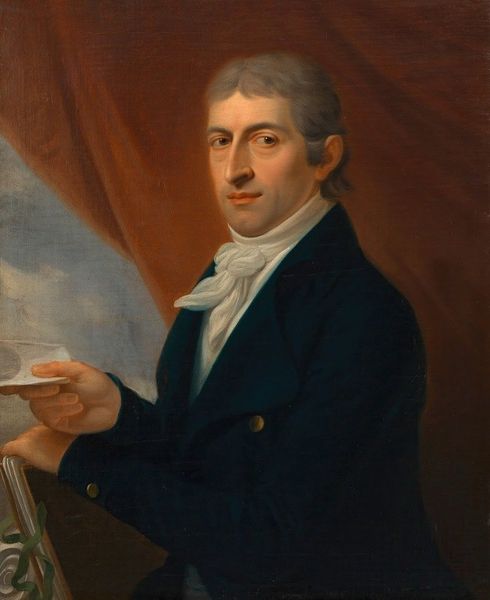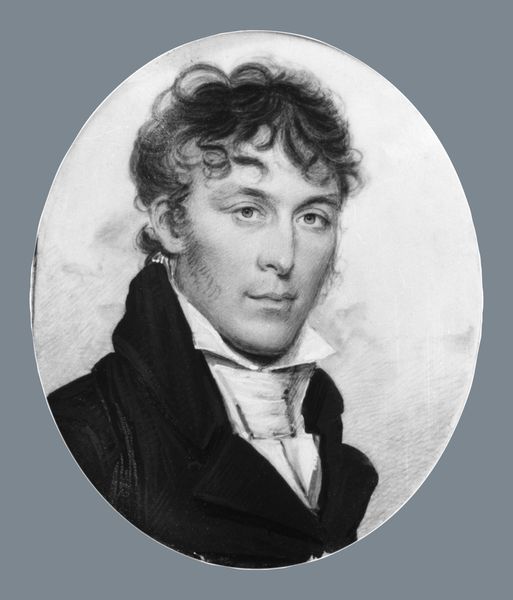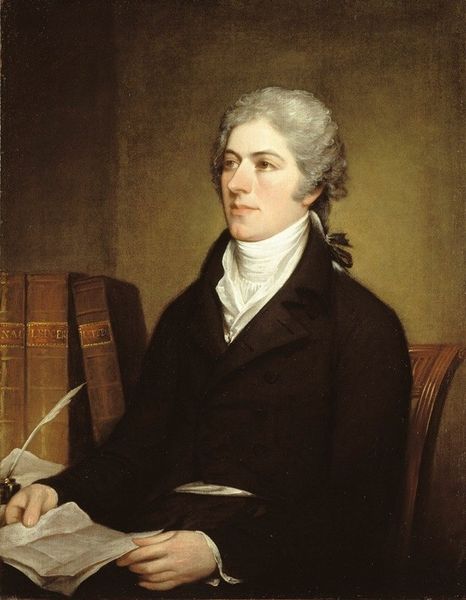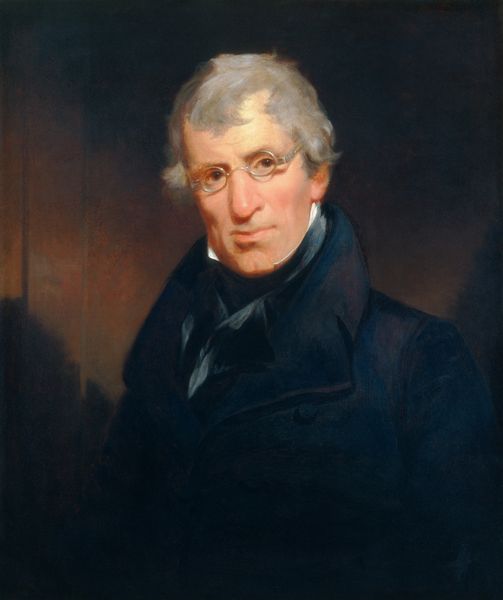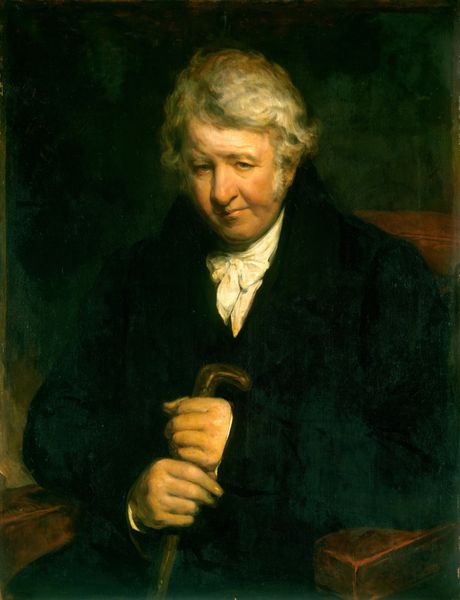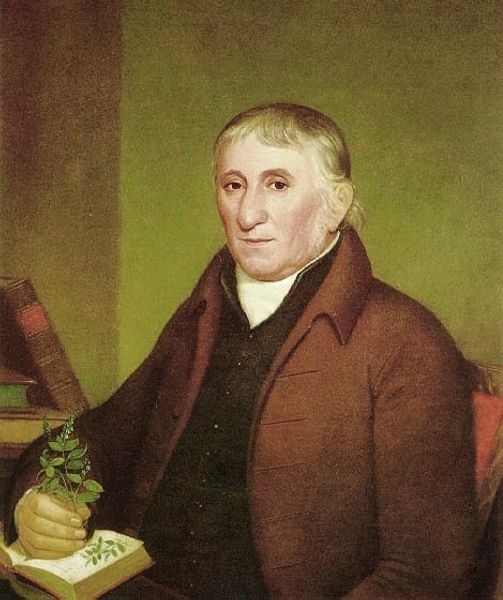
painting, oil-paint
#
portrait
#
self-portrait
#
narrative-art
#
painting
#
oil-paint
#
romanticism
#
history-painting
#
academic-art
Copyright: Public domain
Charles Willson Peale painted this portrait of his son, Raphaelle, with oil on canvas. Raphaelle is holding a palette and brushes, key emblems of his identity as an artist, yet behind him, another framed still life painting depicting fruit suggests a deeper layer. Fruit, especially when arranged in a still life, carries symbolic weight harking back to ancient times. Think of Pomona, the Roman goddess of fruitful abundance, or the symbolic use of fruit in Renaissance vanitas paintings as emblems of transience. Here, it resonates with themes of mortality, memory, and the passing of time. The fruit is decaying, speaking of the ephemeral nature of life and beauty. This motif has resurfaced across millennia, evolving from religious allegories to secular symbols of sensory pleasure and decay. It is a potent reminder of our fleeting existence, engaging viewers with a profound, subconscious awareness of life's transient nature, prompting introspection and emotional resonance.
Comments
No comments
Be the first to comment and join the conversation on the ultimate creative platform.
